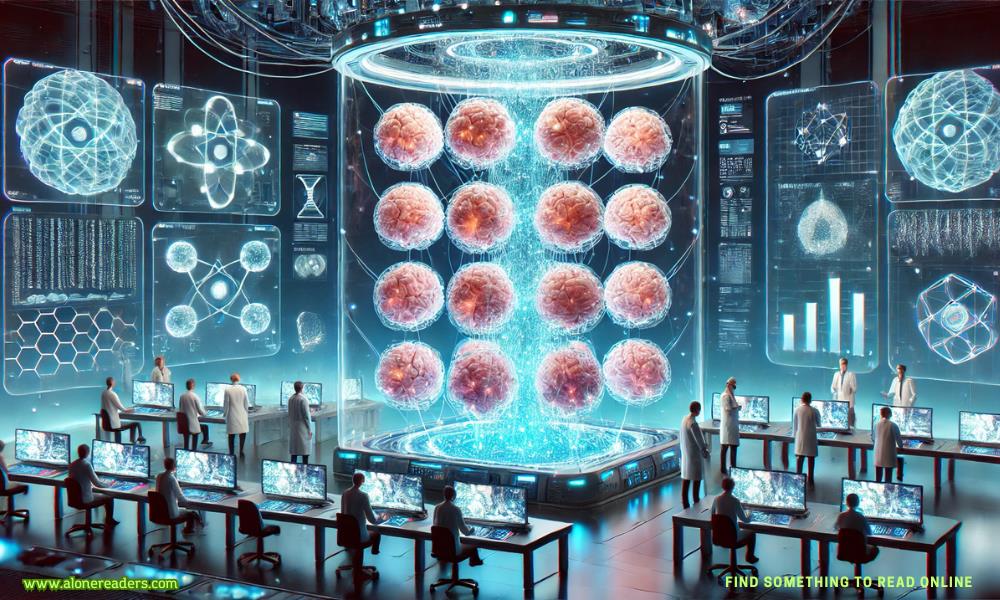
Scientists have taken a remarkable step into the future of computing and biology by creating the world’s first "living computer," composed of 16 mini-brains grown from real human tissue. This groundbreaking innovation merges biological processes with computational technology, promising to redefine how we approach problems in artificial intelligence, medicine, and beyond. The project is the culmination of years of research at the intersection of neuroscience, bioengineering, and computer science, and it has ignited widespread interest and ethical debate in scientific and public spheres alike.
The mini-brains, often referred to as "organoids," are cultivated from human stem cells and are capable of mimicking many functions of a real human brain. While far less complex than a fully developed human brain, these organoids are composed of millions of neurons that form intricate networks, allowing them to process information and even learn in rudimentary ways. These abilities make them an ideal candidate for use in computing, where traditional silicon-based systems are limited by physical constraints like energy consumption and processing power.
The living computer operates by leveraging the unique properties of these organoids. Each mini-brain is connected through a specially designed interface that allows them to communicate with one another. Scientists use this network to simulate computational processes, with the organoids working together to solve specific problems or perform tasks. This biological computing system is seen as a potential alternative to traditional systems, offering unparalleled efficiency and adaptability.
What sets this project apart is its ability to integrate the natural learning processes of human neurons into computational tasks. Unlike traditional computers, which rely on binary systems to process data, these mini-brains exhibit flexibility and adaptability akin to a human brain. They can learn from experience, form connections, and even "forget" information that is no longer relevant. This opens up a host of possibilities for artificial intelligence, where mimicking human cognition remains a central challenge.
One of the most exciting applications of this technology is in the field of personalized medicine. The organoids can be derived from an individual’s own cells, potentially enabling computers that are tailored to specific neurological conditions or learning patterns. For example, researchers hope that these living computers could one day be used to simulate a patient’s brain activity, providing insights into diseases like Alzheimer’s, Parkinson’s, and epilepsy. Such systems could also revolutionize drug testing by providing a platform to observe how treatments affect human brain cells in real time.
Despite its immense promise, the development of living computers raises significant ethical questions. The use of human tissue in creating these mini-brains has sparked debates over the boundaries of scientific research and the potential for unintended consequences. Some ethicists worry that as these organoids grow more advanced, they might develop rudimentary forms of consciousness or self-awareness, posing serious moral dilemmas. Scientists involved in the project emphasize that the organoids are far too simple to exhibit such traits and that rigorous ethical guidelines are in place to ensure responsible research.
There are also practical challenges that must be addressed before living computers can become a mainstream technology. One major hurdle is scalability—while a network of 16 mini-brains can perform basic tasks, expanding this system to handle more complex computations will require significant advancements in bioengineering and interface technology. Additionally, maintaining the organoids in optimal conditions for long periods is resource-intensive and requires a controlled environment that mimics the human body.
The energy efficiency of these biological systems, however, offers a compelling advantage over traditional computing. While silicon-based processors consume vast amounts of energy to perform complex calculations, the living computer operates on a fraction of the power. This could have far-reaching implications for industries ranging from data centers to space exploration, where energy efficiency is a critical concern.
As the technology continues to evolve, scientists are optimistic about its potential to bridge the gap between artificial intelligence and human cognition. By studying how these mini-brains process information, researchers hope to unlock deeper insights into the workings of the human mind. These discoveries could lead to more advanced AI systems that not only mimic human thought but also collaborate with humans in unprecedented ways.
The creation of the first living computer marks a pivotal moment in the history of science and technology. By combining the best of biology and computing, researchers are pushing the boundaries of what machines can achieve. While challenges remain, the possibilities offered by this innovation are as exciting as they are profound. From advancing medical research to reshaping artificial intelligence, the impact of living computers could redefine the trajectory of humanity’s technological progress.